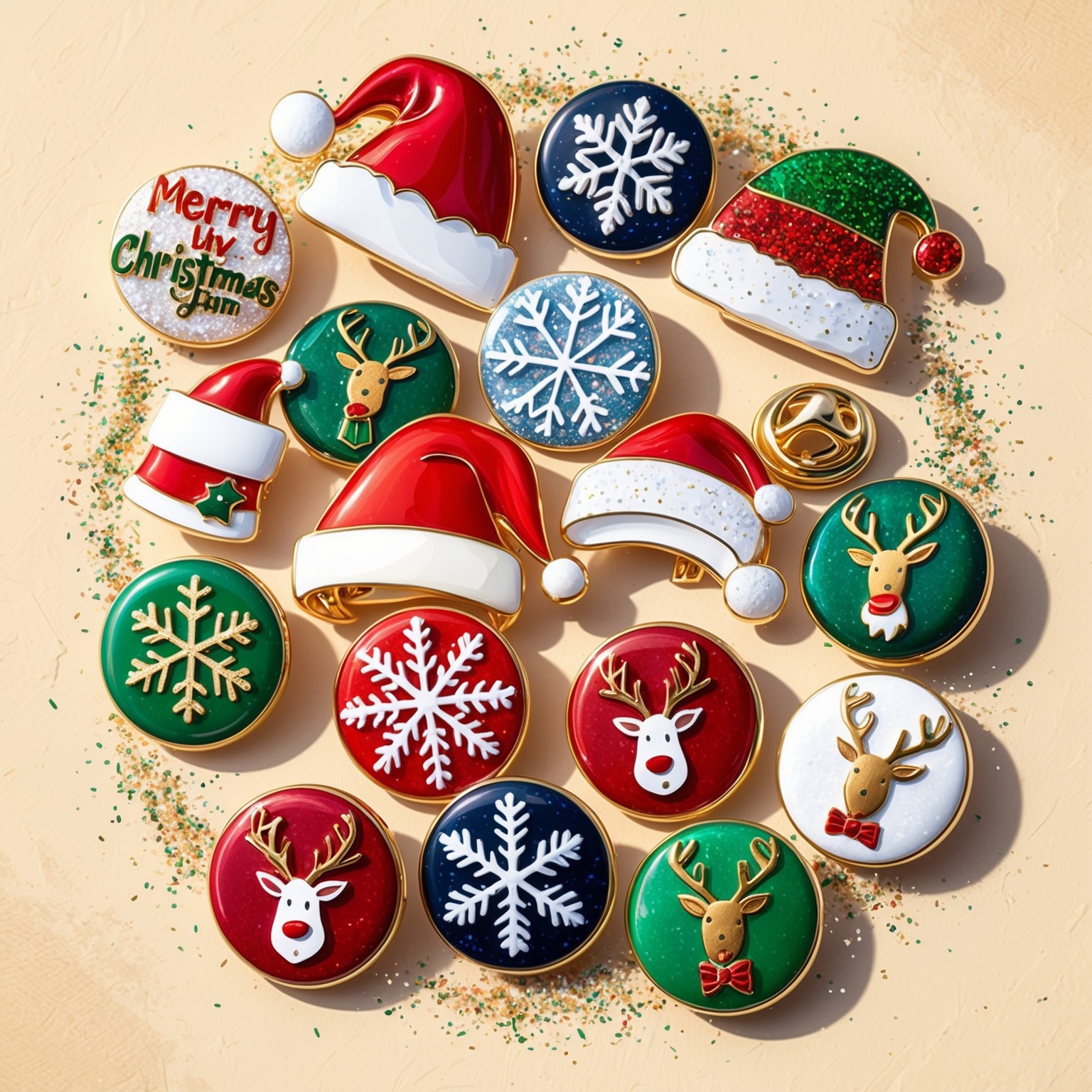Volunteers and donors are the backbone of countless organizations, from nonprofits and charities to community groups and educational institutions. Their time, effort, and financial contributions make a significant impact, often driving the success of important initiatives and programs. Recognizing and celebrating their contributions is not only a gesture of appreciation but also a way to inspire continued support and engagement. One powerful way to honor these individuals is through the creation of meaningful lapel pins.
Lapel pins, when thoughtfully designed, serve as more than just tokens of appreciation—they become symbols of the impact and legacy that volunteers and donors leave behind. These small but significant pieces can be worn with pride, serving as a constant reminder of the positive change that these individuals help create. In this article, we’ll explore how to design meaningful lapel pins that truly celebrate the contributions of volunteers and donors. We’ll cover essential design elements, tips for personalization, and strategies for ensuring that these pins resonate deeply with their recipients.
1. Understand the Purpose and Message
The first step in designing meaningful lapel pins for volunteers and donors is to have a clear understanding of the purpose behind the pin and the message you want it to convey. These pins should serve as a symbol of recognition and gratitude, reflecting the values and mission of your organization while also honoring the specific contributions of the individuals who receive them.
Defining the Purpose:
- Recognition: The primary purpose of these lapel pins is to recognize the efforts and contributions of volunteers and donors. The design should reflect the importance of their role within the organization.
- Inspiration: Beyond recognition, the lapel pins should also serve as a source of inspiration. When recipients wear the pin, it should remind them of the positive impact they’ve made and encourage them to continue their support.
- Connection: The lapel pin should create a sense of connection between the recipient and the organization. It should symbolize their shared commitment to the cause and their role in advancing its mission.
Crafting the Message:
- Gratitude: The lapel pin should express the organization’s gratitude for the recipient’s contributions. This can be conveyed through the use of words, symbols, or imagery that represent appreciation.
- Impact: Consider incorporating elements that highlight the impact of the recipient’s contributions. For example, if the lapel pin is for a donor who funded a specific project, the design could include symbols related to that project.
- Values: Ensure that the design reflects the core values of your organization. Whether it’s compassion, community, or innovation, these values should be evident in the design to reinforce the alignment between the organization and the recipient.
By clearly defining the purpose and message of the lapel pins, you’ll create a strong foundation for a design that resonates with volunteers and donors on a personal level.
2. Incorporate Symbols of the Organization’s Mission
A meaningful lapel pin should reflect the mission and values of the organization it represents. Incorporating symbols that are closely associated with your organization’s mission can make the pin more meaningful to recipients, as it ties their contributions directly to the cause they support.
Choosing the Right Symbols:
- Logo Integration: Including the organization’s logo in the design helps establish a direct connection between the pin and the organization. Ensure that the logo is well-integrated into the overall design and is easily recognizable.
- Mission-Related Imagery: Choose symbols that represent the core mission of the organization. For example, a charity focused on environmental conservation might use symbols like trees, leaves, or the Earth, while a healthcare organization might incorporate symbols such as a heart, stethoscope, or medical cross.
- Cultural or Community Symbols: If your organization serves a specific community or cultural group, consider incorporating symbols that resonate with that group. This can help create a deeper connection between the pin and the people it honors.
Examples of Symbolic Imagery:
- Education: An open book, a graduation cap, or a torch could symbolize knowledge, learning, and enlightenment.
- Humanitarian Aid: A helping hand, a heart, or a globe could represent compassion, care, and global outreach.
- Arts and Culture: A palette, musical notes, or a theater mask could signify creativity, expression, and cultural enrichment.
By thoughtfully incorporating symbols that align with your organization’s mission, you’ll create a lapel pin that not only honors the recipient but also reinforces their connection to the cause they support.
3. Use Color to Convey Emotion and Meaning
Color is a powerful tool in design that can evoke emotions, convey meaning, and create a strong visual impact. When designing meaningful lapel pins for volunteers and donors, choosing the right colors can enhance the overall message of the pin and make it more memorable for the recipient.
Color Psychology:
- Blue: Often associated with trust, loyalty, and calmness, blue is a great choice for organizations that want to convey reliability and dedication.
- Green: Green represents growth, harmony, and renewal, making it ideal for organizations focused on environmental conservation, health, or education.
- Red: Red symbolizes passion, energy, and love. It can be used to convey the organization’s commitment to its cause and the powerful impact of the recipient’s contributions.
- Gold: Gold is often associated with achievement, success, and excellence. It’s an excellent choice for pins that are meant to honor significant contributions or milestones.
Creating a Color Palette:
- Brand Colors: Start by incorporating your organization’s brand colors into the design. This helps maintain consistency with other materials and reinforces the visual identity of the organization.
- Accent Colors: Use accent colors to highlight specific elements of the design, such as symbols or text. Accent colors can also be used to create contrast and make the design more visually engaging.
- Metal Finish: Consider the color of the metal finish when selecting your color palette. The metal finish (e.g., gold, silver, bronze) will interact with the enamel colors, so it’s important to choose colors that complement the finish.
Tips for Effective Color Use:
- Limit the Palette: To avoid a cluttered look, limit your color palette to three to five colors. This creates a cohesive and polished design.
- Consider Contrast: Ensure that there is sufficient contrast between the colors used in the design. High contrast between the background and text or symbols makes the pin easier to read and more visually striking.
- Test Combinations: Before finalizing the design, test different color combinations to see how they look together. This can help you identify the most effective palette for your lapel pin.
By using color strategically, you can create a lapel pin that not only looks beautiful but also conveys the right emotions and meaning to the recipient.
4. Personalize with Names, Dates, and Achievements
Personalization adds a unique touch to lapel pins, making them more meaningful to the recipients. By including details such as names, dates, or specific achievements, you can create a pin that feels truly special and tailored to the individual.
Ways to Personalize Lapel Pins:
- Recipient’s Name: Adding the recipient’s name to the lapel pin is a simple but powerful way to personalize it. This makes the pin feel like it was created specifically for them, enhancing its sentimental value.
- Dates: Including a date, such as the year of service or the date of a significant event, helps commemorate the specific time frame of the recipient’s contribution. This is particularly meaningful for milestone anniversaries or events.
- Achievement Recognition: If the lapel pin is being awarded for a specific achievement, such as reaching a fundraising goal or completing a major project, include a reference to that achievement. This could be in the form of text (e.g., “Top Fundraiser 2023”) or symbols that represent the achievement.
Balancing Personalization with Design:
- Placement: Carefully consider the placement of personalized elements within the design. These details should be prominent but not overpower the overall design. For example, names and dates could be placed along the border or at the bottom of the pin.
- Font Choice: Choose a font that is legible and matches the tone of the design. A classic serif font may be appropriate for formal or traditional designs, while a clean sans-serif font could work well for modern designs.
- Space Constraints: Be mindful of the limited space on a lapel pin. Keep personalized text concise to ensure that it remains readable and doesn’t clutter the design.
By incorporating personalized elements into your lapel pins, you’ll create a one-of-a-kind piece that recipients will cherish as a symbol of their unique contributions.
5. Consider the Shape and Size of the Pin
The shape and size of a lapel pin play a crucial role in its overall design and how it is perceived by the recipient. While traditional round or rectangular shapes are popular choices, custom shapes can add a unique dimension to your lapel pin, making it even more meaningful.
Choosing the Right Shape:
- Standard Shapes: Circles, squares, and rectangles are classic shapes that offer a clean and versatile canvas for your design. These shapes are suitable for a wide range of designs and are often easier to produce.
- Custom Shapes: Custom shapes allow you to create a lapel pin that is truly unique and tailored to your organization or cause. For example, if your organization is focused on environmental conservation, you might choose a leaf or tree shape. If you’re honoring a specific event, consider a shape that represents that event, such as a ribbon or star.
- Symbolic Shapes: The shape of the pin itself can carry symbolic meaning. For example, a heart shape could symbolize love and compassion, while a shield shape could represent protection and strength.
Determining the Size:
- Standard Sizes: Most lapel pins range in size from 0.75 inches to 1.5 inches. This size range is large enough to include detailed designs while remaining subtle and easy to wear.
- Detail Considerations: If your design includes intricate details, you may want to opt for a slightly larger pin to ensure that those details are clearly visible. Conversely, if your design is simple and elegant, a smaller size may be more appropriate.
- Wearability: Consider how the pin will be worn. Smaller pins are more versatile and can be worn on a variety of garments, while larger pins make a bolder statement and may be better suited for special occasions or as collectibles.
By carefully considering the shape and size of your lapel pins, you’ll create a design that is both visually appealing and functional for the recipient.
6. Select High-Quality Materials and Finishes
The quality of materials and finishes used in your lapel pin design has a significant impact on the overall appearance and durability of the pin. Choosing high-quality materials not only ensures that the pin looks great, but it also makes it a lasting keepsake that recipients can treasure for years.
Material Options:
- Enamel Pins: Enamel pins are popular for their vibrant colors and durable finish. They come in two main types: soft enamel, which has a textured surface, and hard enamel, which is polished to a smooth, glossy finish. Both types are excellent choices for colorful, detailed designs.
- Die-Struck Pins: Die-struck pins are made from metal and do not include color. The design is created through the use of the metal’s texture and finish, making these pins ideal for elegant, understated designs that emphasize fine details.
- Offset Printed Pins: Offset printed pins allow for full-color designs with intricate details, including gradients and small text. These pins are perfect for designs that require a high level of detail and color accuracy.
Finish Options:
- Gold: Gold plating adds a luxurious and prestigious look to the pin, making it ideal for recognizing significant contributions or milestones.
- Silver: Silver is a versatile and classic finish that works well with a variety of color palettes and designs. It’s a great choice for a modern, polished look.
- Antique Finishes: Antique gold, silver, or bronze finishes give the pin a vintage look and feel. These finishes are ideal for designs that evoke tradition or historical significance.
- Specialty Finishes: Consider specialty finishes such as glitter, glow-in-the-dark, or translucent enamel to add a unique touch to your lapel pins. These finishes can make the pin stand out and add an element of surprise and delight.
Quality Considerations:
- Durability: Ensure that the materials and finishes you choose are durable and resistant to wear. High-quality enamel, metal, and plating will ensure that the pin retains its appearance over time.
- Clarity: Choose materials and finishes that enhance the clarity of the design. For example, a smooth, polished finish may be better suited for designs with fine details, while a textured finish may work well for simpler, bold designs.
By selecting high-quality materials and finishes, you’ll create a lapel pin that not only looks beautiful but also stands the test of time, making it a meaningful keepsake for volunteers and donors.
7. Work with a Professional Designer and Manufacturer
Creating meaningful lapel pins requires a combination of creative vision and technical expertise. Working with a professional designer and manufacturer can help bring your ideas to life with precision and quality, ensuring that the final product meets your expectations and resonates with the recipients.
Benefits of Professional Collaboration:
- Expertise: Professional designers understand the intricacies of lapel pin design, including how to balance color, text, and imagery. They can refine your ideas and ensure that the final design is both aesthetically pleasing and functional.
- Customization Options: Working with a professional allows you to access a wider range of customization options, including custom shapes, finishes, and materials. This ensures that your lapel pin is truly unique and tailored to your organization’s needs.
- High-Quality Production: A professional manufacturer can produce lapel pins with precise detail, vibrant colors, and durable materials. They also ensure consistency across multiple pins, so each one meets your standards.
- Technical Knowledge: Designers and manufacturers have the technical knowledge needed to ensure that your lapel pin design works well within the production constraints, resulting in a high-quality final product.
How to Collaborate Effectively:
- Share Your Vision: Provide the designer with a clear brief that includes your concept, purpose, and any specific design elements you want to include. The more information you provide, the better they can bring your vision to life.
- Review and Revise: Work closely with the designer throughout the process, providing feedback and requesting revisions as needed. This collaboration ensures that the final design meets your expectations.
- Approve the Final Design: Before production begins, make sure to review and approve the final design to ensure it aligns with your vision and meets all of your requirements.
By collaborating with a professional designer and manufacturer, you’ll ensure that your lapel pin is of the highest quality and accurately reflects the significance of the contributions it honors.
Designing Meaningful Lapel Pins to Celebrate Volunteers and Donors
Designing meaningful lapel pins for volunteers and donors is a thoughtful and impactful way to recognize their contributions and express your organization’s gratitude. These pins serve as symbols of appreciation, connection, and inspiration, making them cherished keepsakes that recipients will wear with pride.
By following these seven expert tips—understanding the purpose and message, incorporating symbols of your organization’s mission, using color to convey emotion, personalizing with names and achievements, considering shape and size, selecting high-quality materials, and working with a professional—you’ll create lapel pins that resonate deeply with volunteers and donors.
A well-designed lapel pin not only honors the efforts of those who support your organization but also strengthens their connection to the cause, encouraging continued engagement and support. Whether worn on a jacket, displayed on a bag, or kept as a memento, these meaningful lapel pins will serve as lasting reminders of the positive impact that volunteers and donors have made.
So, take the time to design lapel pins that truly celebrate the contributions of those who make a difference, and watch as they become treasured symbols of the commitment, dedication, and generosity that drive your organization’s success.
If you are interested in ordering some high-quality lapel pins, feel free to call us at our Toll free number 1-877-513-4811 or fill out one of our FREE QUOTE FORMS.



